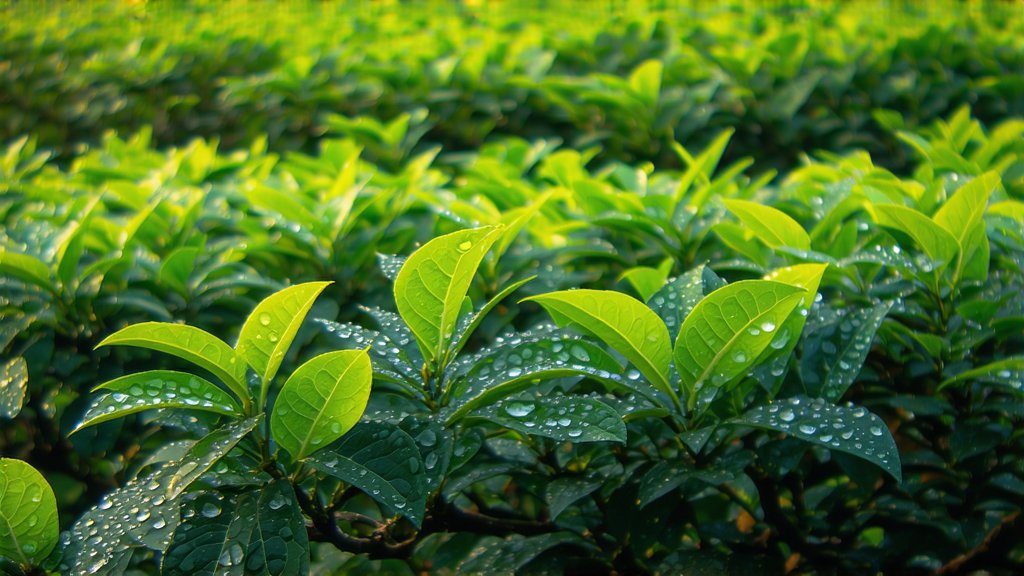
Keemun Black Tea, a distinguished member of China's rich tapestry of tea varieties, stands as a testament to centuries-old tradition and meticulous craftsmanship. Originating from Qimen County in Anhui Province, this tea has captivated tea connoisseurs worldwide with its unique flavor profile and aromatic complexity. In this exploration, we delve into the historical roots, diverse types, intricate production process, and nuanced appreciation methods of Keemun Black Tea.
Historical Roots
The story of Keemun Black Tea begins in the early Tang Dynasty (618-907 AD), during which Emperor Xuanzong decreed that the best quality tea leaves should be reserved for the imperial court. It wasn't until the late 19th century, however, that Keemun gained international recognition when it was introduced to Western markets. Its name is derived from the Qimen region, where the tea is primarily grown, and 'Keemun' simply represents the phonetic spelling adapted by English speakers. Over time, Keemun has become synonymous with high-quality black tea, earning accolades such as the title of "Prince of Teas."
Diverse Types of Keemun Black Tea
Keemun Black Tea encompasses several distinct categories, each with its own character and appeal:
-
Huangshan Maofeng: Often considered the pinnacle of Keemun teas, Huangshan Maofeng translates to "Yellow Mountain Fur Peak" due to its origin near the Yellow Mountains. This tea is prized for its golden tips and full-bodied flavor.
-
Xian Hong Mee: Known for its delicate taste and light amber color, Xian Hong Mee is a popular choice among those who prefer a milder cup of tea.
-
Gong Mei: With a slightly stronger flavor profile than Xian Hong Mee, Gong Mei offers a balanced blend of sweetness and astringency, making it a favorite among seasoned tea drinkers.
-
Qimen Gongfu: True to its name, meaning "Skillful Work from Qimen," this variety emphasizes traditional handcrafting techniques, resulting in a robust and deeply flavored tea.
-
Chuanhong Gongfu: While not strictly from Qimen, Chuanhong Gongfu shares similarities with Keemun in terms of processing and taste, often being blended or confused with true Keemun teas.
Intricate Production Process
The creation of Keemun Black Tea involves a series of meticulous steps that transform fresh tea leaves into the dried, fermented product we know today. Here's an overview of the traditional craftsmanship involved:
-
Withering: Freshly picked leaves are spread out in thin layers to wilt under controlled conditions, reducing moisture content and preparing them for rolling.
-
Rolling: Leaves are rolled to break down cell walls, releasing essential oils and enzymes that contribute to oxidation and flavor development.
-
Oxidation: The rolled leaves are allowed to oxidize, turning their vibrant green hue to a deep coppery brown. This process develops the characteristic flavors and aromas of Keemun tea.
-
Drying: Finally, the leaves are dried to halt further oxidation and reduce moisture levels, ensuring stability and longevity.
Each step requires precision and experience, with skilled artisans carefully monitoring temperature, humidity, and timing to achieve the desired outcome.
Nuanced Appreciation Methods
To fully appreciate Keemun Black Tea, one must engage all senses in the tasting process. Here are some guidelines for an optimal experience:
-
Visual Inspection: Observe the dry leaves for their uniformity and the presence of golden tips, indicative of high-quality tea. Upon steeping, note the rich amber or coppery color of the liquor.
-
Aroma: Before sipping, inhale deeply to detect the complex bouquet of floral, fruity, and earthy notes that define Keemun's aroma.
-
Tasting: Take a small sip, allowing the tea to coat your palate. Notice the initial sweetness followed by subtle tannins and a lingering aftertaste that reveals layers of flavor.
-
Texture: Pay attention to the mouthfeel—a well-made Keemun should have a smooth, velvety texture without any harsh astringency.
-
Finish: Reflect on the overall harmony and balance of the tea, considering its complexity and how it evolves with each subsequent infusion.
In conclusion, Keemun Black Tea is more than just a beverage; it embodies a legacy of cultural heritage and artisanal excellence. From its storied past to its meticulous present-day production, every aspect of Keemun speaks to the artistry and passion embedded in Chinese tea culture. For enthusiasts seeking a journey through taste and tradition, exploring the depths of Keemun Black Tea is an endeavor well worth embarking upon.